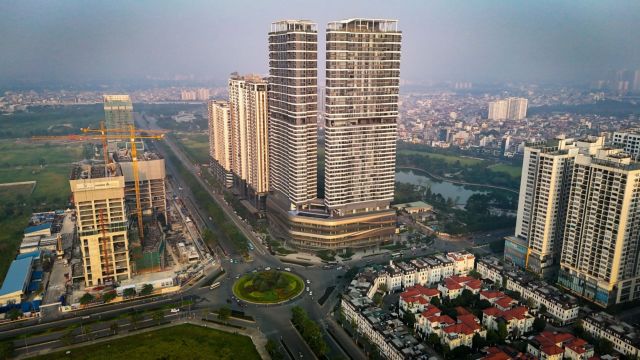Tây Hồ, Hà Nội, an area of the city I have, and will continue to, poke fun at for the sheer concentration of residents whose entire Vietnam experience starts, unfolds and seemingly ends on Đặng Thai Mai Street.

Many high-rise buildings are being constructed within the Tây Hồ Urban Area. VNA/VNS Photo
By Alex Reeves - @afreeves23
Writing from my Mumbai motel near the airport, having wandered both here and New Delhi, I’m feeling reflective. A month back in the UK really drove home the idea that if things don’t move forwards, they stand still. The death of the high street is a serious issue. Consumerism has been digitised. Local businesses, once hubs for community interaction, have been wiped out by extortionate running costs, while their would-be customers can no longer afford to offer the patronage needed to keep them afloat.
Time in some of India’s big cities showed me that modernisation is truly complicated. People in the slums here, even when offered new apartments built in the same areas where they currently survive, often decline. Fear of change plays a big part. Other areas, once poverty stricken, are now thriving urban neighbourhoods with their traditions carried from makeshift stalls to sturdy shop fronts. In Goa, expansionist gentrification is visible in the glut of timeshare adverts, too few tourists for too many shops, and the nagging question of whether this beautiful landscape really needs a Baskin Robbins.
Back in Việt Nam, I’ve always said that Hà Nội, in its essence, is a testament to tradition's resilience in the face of relentless modernisation. The city hasn’t changed that much in the decade or so I’ve lived there, or at least it hasn’t become less social or alive. The bars and restaurants have improved, and while the city's expansion has absorbed more of the neighbouring towns and villages, there’s always been a strong sense of preservation in the places where I’ve made memories. Until now, at least.
Tây Hồ, Hà Nội, an area of the city I have, and will continue to, poke fun at for the sheer concentration of residents whose entire Việt Nam experience starts, unfolds and seemingly ends on Đặng Thai Mai Street. Jokes aside, it is undoubtedly a community. ‘Expats’ and locals alike have congregated and collaborated to create a quarter of the city with a real vibrancy. From local businesses, football pitches and block parties to community groups, there is a palpable sense of belonging among those who thrive there.
The news, if you haven’t already heard it, is that large sections are set to be demolished. The area as you currently know it will cease to exist, and many of the ‘expat’ favourites will go along with it. They will make way for high-end housing, a new opera house and wider roads. This is undoubtedly a loss, for both a community shaped over decades and those of us who have enjoyed the flavours of its cultural melting pot. Saddening and frustrating for all involved.
The risk, as people scatter to different corners of the city, is that it may never truly be revived. It is not my place to preach on the ethics of city planning, and I have always hoped that urban development would enhance Hà Nội rather than compromise its charm, but I cannot help but feel this may mark the end of an era. For now, we must enjoy it while we can and look forward with hope to whatever comes next. VNS